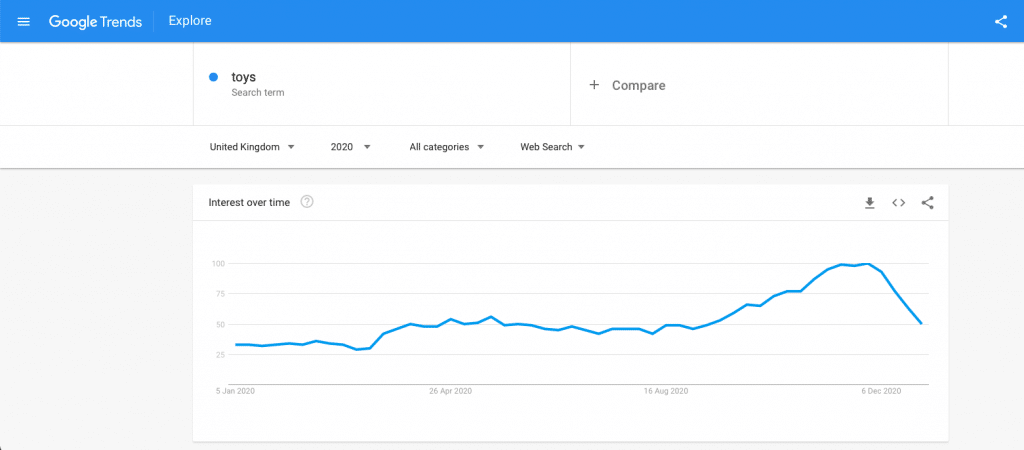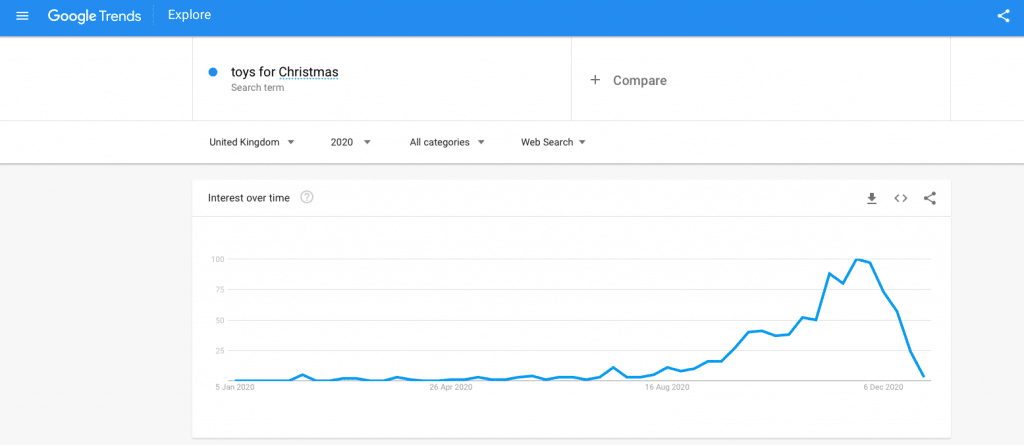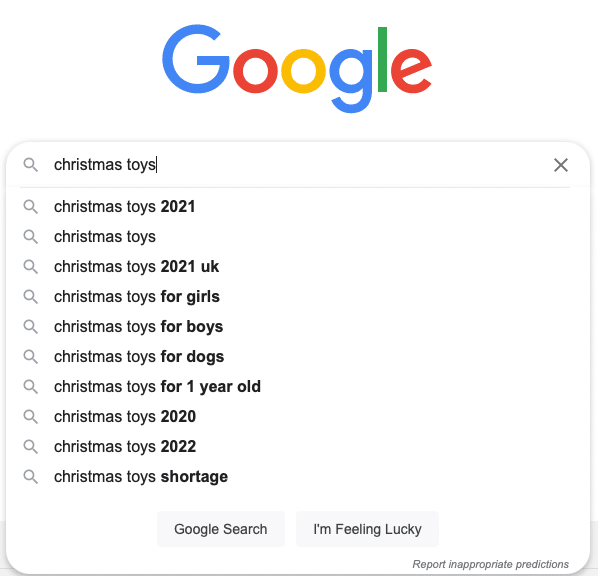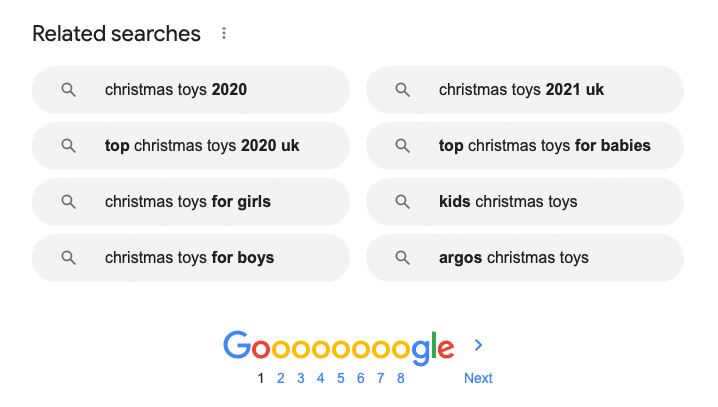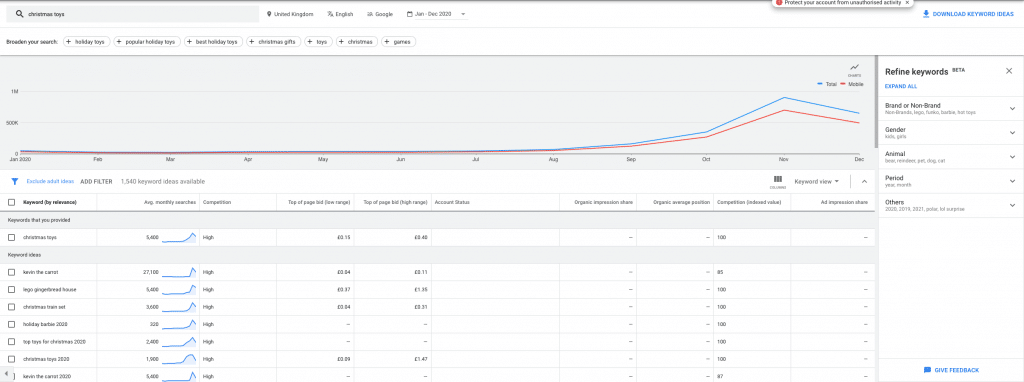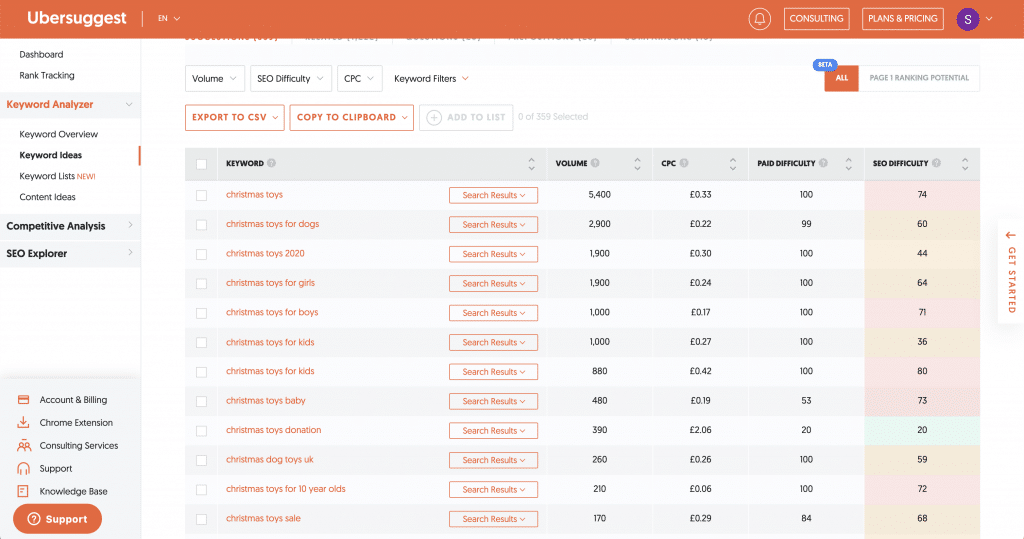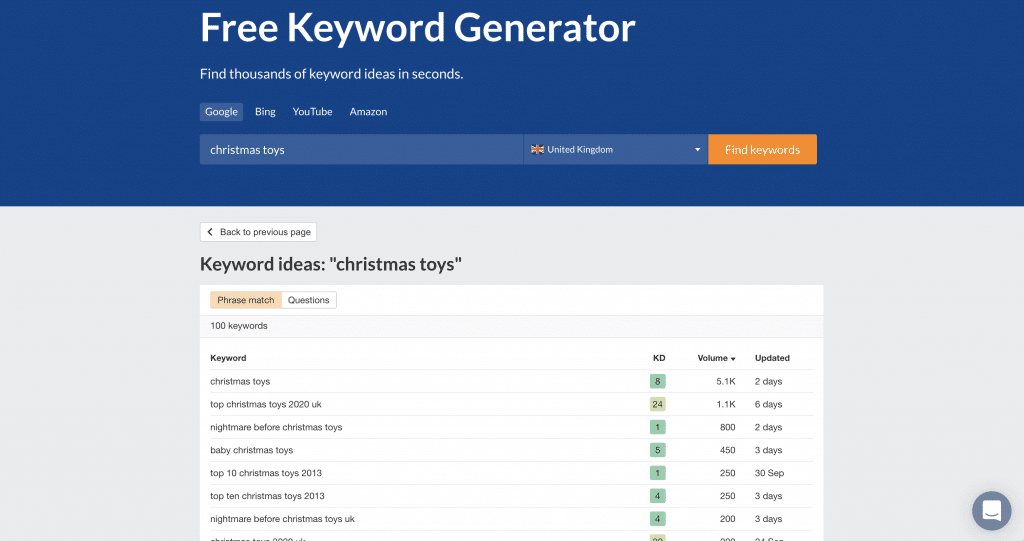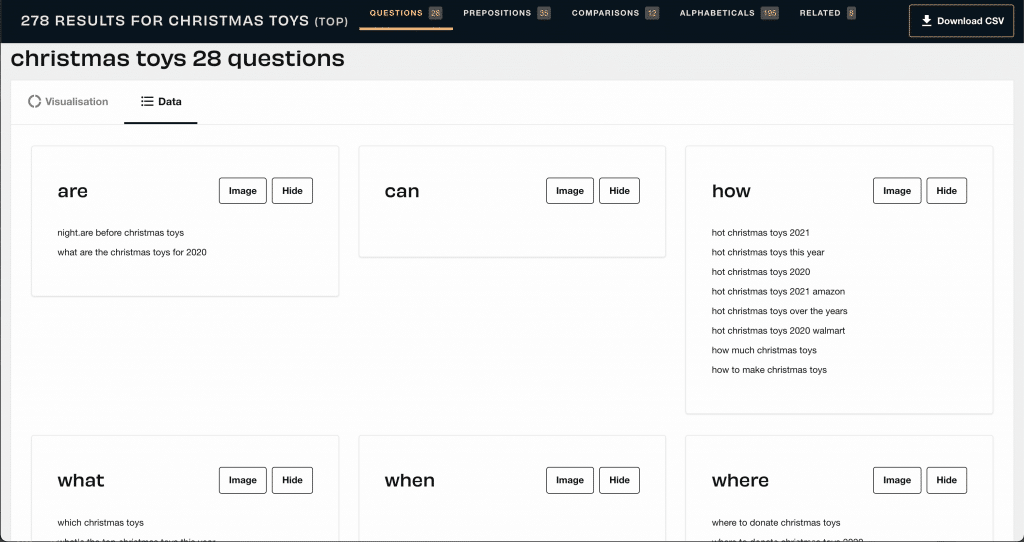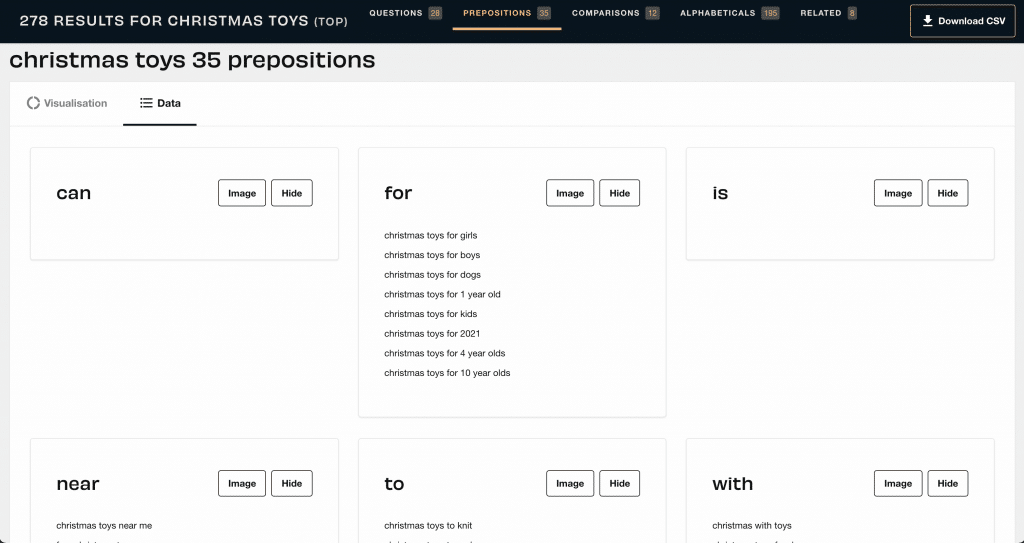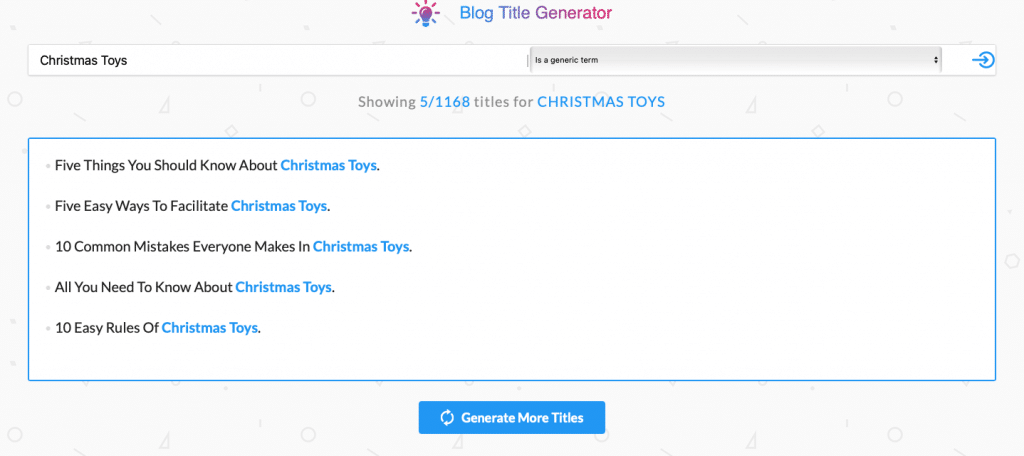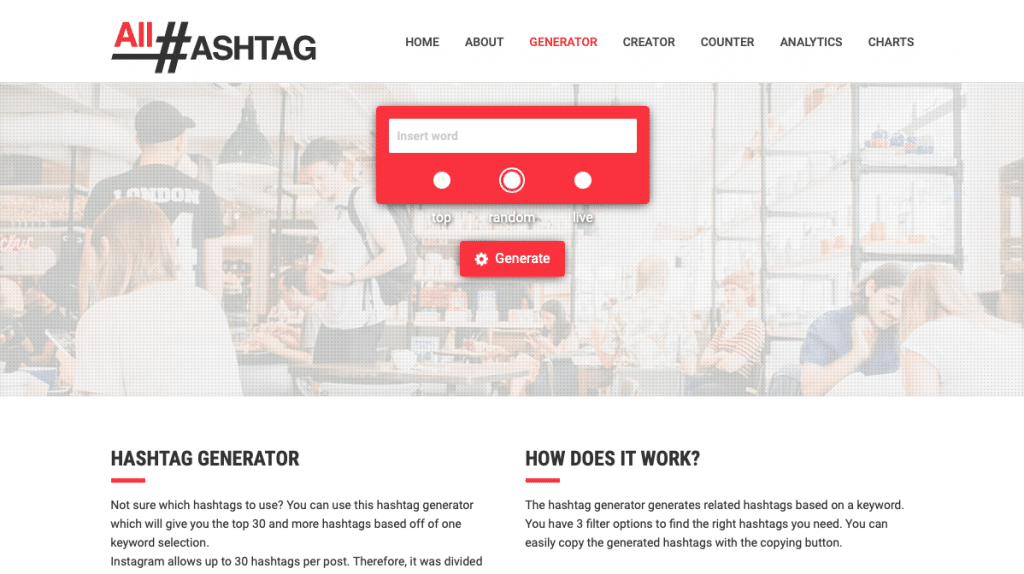Taking a proactive approach to seasonal trends can help you through fluctuations in search traffic.
A solid understanding of seasonal SEO is essential for building a winning SEO strategy, getting insights from your performance data, and providing accurate reports to your clients.
Using seasonal keywords at certain times of the year can be a very effective way of promoting your business. For many businesses, Christmas is their most important trading period. In the run up to Christmas, large numbers of people are also searching online with a high intent to purchase. It is therefore very important for a business that relies on Christmas to make sure that it is your businesses page that these searchers find.
You should consider how important seasonal traffic is to your business. Christmas may not be your most important season, but you may find that other calendar events such as Easter, Black Friday or Valentines Day are more effective periods for your business to target. We are using Christmas as an example here but the information can be easily applied to other times of the year.
Contents
Seasonal Keywords Start with a Seed
A seed keyword is a one or two word phrase that is key to your industry. For example, a toy shop, would have ‘toys’ and ‘games’ as some of their most important seed keywords. Adding Christmas related words (such as present, Christmas, gift, holiday) to these words would give you ‘Christmas toys’, ‘toys for presents’, ‘games for Christmas’, ‘holiday games’ etc.). This is a good starting point for researching seasonal keywords.
When you have a few seasonal keywords, it is important to check how popular these are. You don’t want to spend your precious time targeting keywords that nobody is searching for. To help you find out the popularity of your keywords, there are several free tools available. A good starting point is Google Trends which allows you to test keywords and see how they have performed over time.
Google Trends is a flexible tool which allows you to specify a date range for your chosen keyword. Comparing the trends over 2020 for ‘Toys’ (above) and ‘Toys for Christmas’ (below) you will notice a significant increase in the number of searches in the run up to Christmas for both keywords, however the increase is significantly more pronounced for the ‘Toys for Christmas’ keyword.
Expanding your Seasonal Keywords List
If you need further seasonal keyword ideas, you can use Google search to grow your list. By typing in your seed keyword into the search box, Google will give you some suggestions based on your keyword in the drop-down box based on some of the more popular searches related to your keyword.
At the bottom of the Google search results page, you can also find a few more related keywords. This is a good way of finding a few extra words, but you won’t find many using this method. You also will not get information like the number of searches that take place each month. Fortunately, there are other free ways of growing your list with more keywords and more information.
Google Ads
If you have a Google Ads account, you will have access to Google’s excellent Keyword Planner tool. This will give you a list of keyword ideas based on your seed and seasonal keywords. It also tells you the average number of monthly searches for each and how competitive these keywords are.
If you can find keywords with a high number of searches but low competition, these are the ideal words for you to build content around.
Ubersuggest
If you don’t have a Google Ads account, the free tier of Ubersuggest will give you a list of related keywords when you enter in your seasonal and seed keywords. By creating an account or logging in with your Google account, you will be shown a longer list of words. Here, you should be paying attention to ‘Volume’ which is the number of searches (higher is better) and ‘SEO Difficulty’ (lower is better).
Ahrefs Keyword Generator
It is also worth heading over to Ahrefs Keyword Generator which allows you to find keyword suggestions for Google, Bing, YouTube and Amazon. Here, as well as volume, you should pay attention to the ‘KD’ or Keyword Difficulty column, where a lower score is better.
For specific Christmas or other seasonal content, you can check any high search volume and low competition keywords you have found in Google Trends, to see which of these perform particularly well in the run up to Christmas.
Long Tail Seasonal Keywords
Long Tail Keywords are the longer four and five word keywords that have a lower search volume but often have a higher purchase intent. Answer the Public is a great source of long tail keywords and it provides results that are separated into questions, prepositions, comparisons and more.
Putting your seed keywords into Answer the Public can produce results that, when used in your seasonal content, can be an effective way of targeting your potential customers. Although individual long tail keywords have a lower search volume than seed keywords, over 90% of all web searches are long tail keywords, so you will be targeting searchers who are much closer to making a purchase.
Coming up with a Content Strategy for your Seasonal Keywords
By now you should have found several high search and low competition keywords and narrowed down your list down to the keywords that perform especially well in the lead up to Christmas. This list, can serve as a starting point for creating blog articles and other content such as guides that have a good chance of performing well in Google and Bing searches.
Choosing a Title
If you’re struggling to come up with a title that makes the most of your chosen keywords, a tool like SEOpressor’s Blog Title Generator or Content Row’s Headline Generator can help you.
Be aware that you will have to sort through the results to find a headline best suited to your niche as the results can be a little generic. Using SEOPressor, it wasn’t until the fifth page that there was a headline that worked well with our chosen keyword. However on that page there was ‘Five things You Should Know about Christmas Toys’ and ‘All you should know about Christmas Toys’. There was another suggestion that needed a small tweak to come up with ’10 Common Mistakes Everyone Makes When Buying Christmas Toys’.
Using Your Keywords
The most effective strategy is to target one keyword per page and also only one page per keyword, so that your pages don’t end up competing with each other. When writing page content, make sure that your keywords appears regularly (but not too regularly – once or twice per 100 words is sufficient). Make sure to use the keyword in your page title, any subheadings and in the alt text of any images you are using on the page.
Use related words that you might have found during your research but that you are not planning to build unique content around as this can help you avoid keyword stuffing.
Remember that SEO is a long game and do not expect overnight results, but by following this guide, you will significantly increase your chances of creating a page on your website that will rank well on Google or Bing.
Promoting Your Seasonal Content on Social Media
Once you’ve written your new content, you will undoubtedly want to share it with the world. This is where social media comes in! By creating a post on your social channels linking to your page, everyone who follows you will see it and hopefully share it to their followers too.
When writing your post, let people know what they can expect to see when they click on your link and use an eye-catching image. Don’t make the post too long, as anything over a few lines will be hidden under a ‘Read More’ button on Facebook and LinkedIn and Twitter has a hard 280 character limit. It is OK to overrun slightly on Facebook and LinkedIn, but make sure that you put the most compelling reasons to read your article at the beginning of your post.
By adding hashtags to your post, you can increase your reach to people who are searching for that term. You should absolutely include the seasonal keyword you are targeting as a hashtag. Also include any brand hashtags that you regularly use or that are particularly relevant to your post. For more ideas, you can always use a hashtag generator such as All Hashtag, or Hashtagify.
Helping You to Create Great Seasonal Content
By now you should have enough information to undertake seasonal keyword research. At times, SEO can seem like a long slog, and the fact that you may not see immediate results can be disheartening. However, by focusing on content that you know people are searching for, you are on the right track.
At SocialB, we have seen time and time again how good keyword research and SEO pays dividends down the line. Find out more about how SocialB can help your business with SEO here, or read about our full range of digital marketing services here.
For more information, or to speak to one of our representatives, contact us today.



